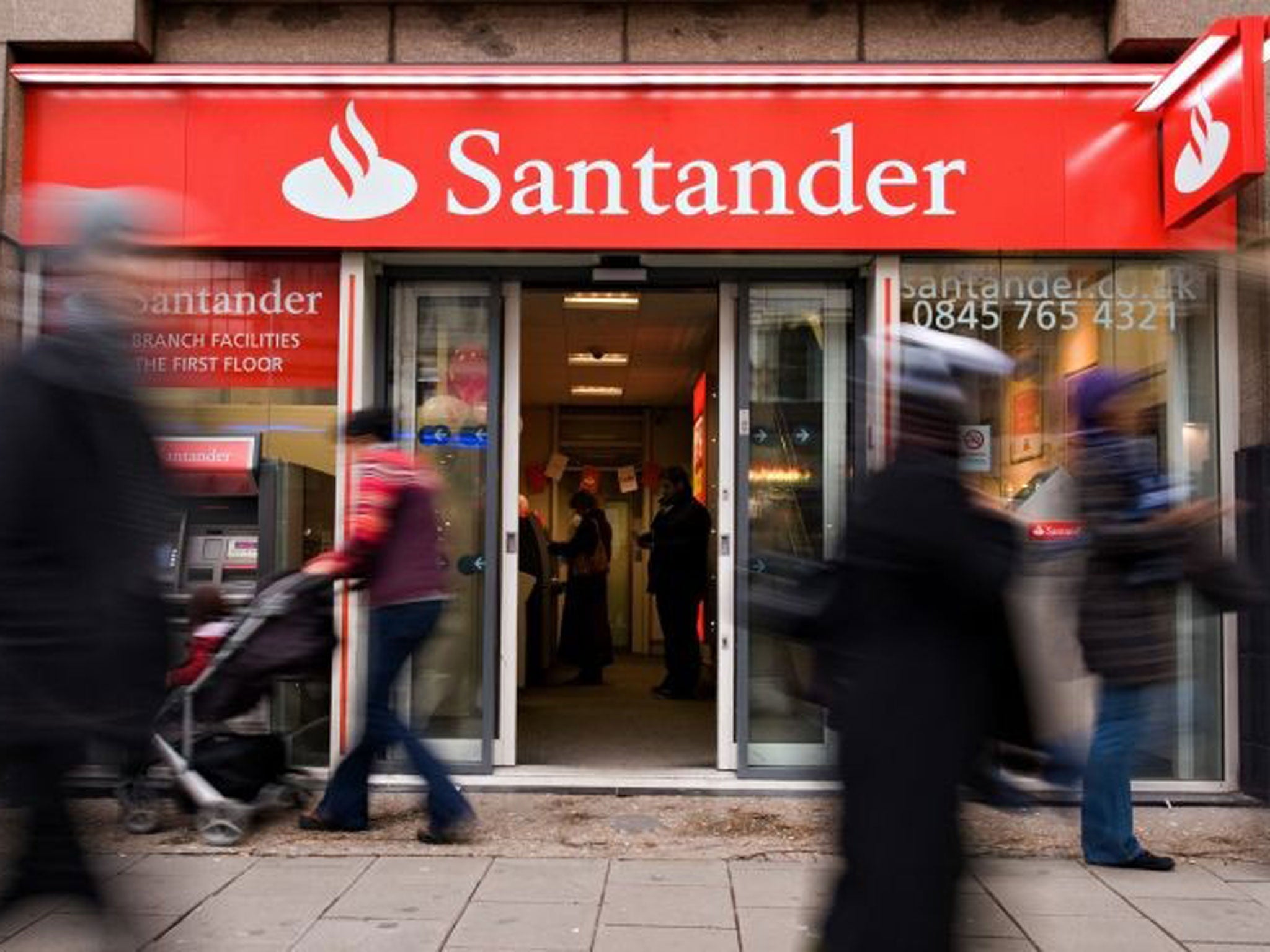Santander's 5% savings come-on that turns into a stinker ...
Paltry rates should be published as well as the attractive short-term headline offers

Your support helps us to tell the story
From reproductive rights to climate change to Big Tech, The Independent is on the ground when the story is developing. Whether it's investigating the financials of Elon Musk's pro-Trump PAC or producing our latest documentary, 'The A Word', which shines a light on the American women fighting for reproductive rights, we know how important it is to parse out the facts from the messaging.
At such a critical moment in US history, we need reporters on the ground. Your donation allows us to keep sending journalists to speak to both sides of the story.
The Independent is trusted by Americans across the entire political spectrum. And unlike many other quality news outlets, we choose not to lock Americans out of our reporting and analysis with paywalls. We believe quality journalism should be available to everyone, paid for by those who can afford it.
Your support makes all the difference.Santander has this week launched a great new regular saver account paying a cracking five per cent. But it has a rotten secret. After a year the rate slumps to a pathetic 0.25 per cent.
The email telling me about the new deal mentioned the five per cent rate three times, including in the header. It mentioned that “new and existing Santander customers can benefit” from the new fixed rate. It also mentioned that after 12 months the account will change to an Everyday Saver.
But there was no actual mention of the paltry rate that customers would “benefit” from after a year. To find that out took some time. First I had to go to Santander’s website and then click on “Cash Isas & Savings”.
On the next page I had to click again, this time to “Find out more” about savings accounts. Yet again I had to click to “Find out more” about the Everyday Saver account. Only then was I presented with the promise that I could “earn a rate of 0.25%”.
Now that information was only three clicks away, but in my view, that was three clicks too far. You’d almost think that the Spanish-owned bank was keen to hide from customers the rate that was actually paid on the account.
Actually, I think that’s probably a certainty. Of course it’s always possible to find out facts, but firms make it as difficult as possible for us to discover the actual terms and conditions of their offers.
I think that stinks. Introductory offers from banks and building societies are just sneaky marketing tricks to persuade unsuspecting people into switching their hard-earned savings into what will prove in the long-term to be a rubbish rate.
Regular switchers will say it’s up to people to ensure they’re not ripped off by such deals. I disagree. It’s time firms published the paltry rates they offer as prominently as the attractive short-term headline offers.
The advertising should read something like this: “Santander’s new account pays a pathetic 0.25 per cent but an attractive five per cent for the first year.” That’s still tempting but not so misleading.
Join our commenting forum
Join thought-provoking conversations, follow other Independent readers and see their replies
Comments